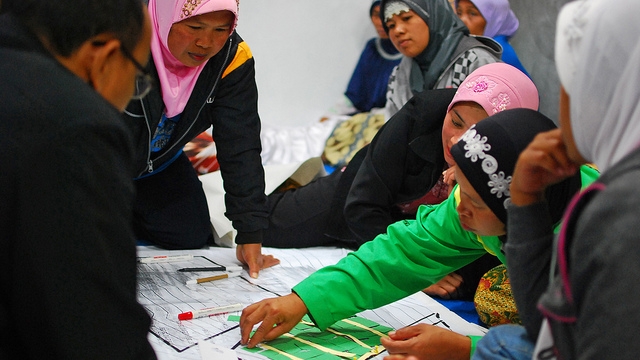Monitoring and evaluation (M&E) in community-driven development (CDD) operations is crucial in order to provide information for decision-making and improve project management, to assess development effectiveness and demonstrate results, and of particular relevance in the CDD context, to empower communities and ensure greater transparency and accountability.
Monitoring refers to the regular collection and analysis of data on specific indicators to assist timely decision making, ensure accountability and provide the basis for learning. It is a continuing function that provides management and other stakeholders with valuable feedback on what is working, what isn't and why, and early indications of progress and achievement of objectives. Ongoing monitoring is integral to a flexible and responsive CDD program, and should serve as a management tool and as a means for advancing CDD goals of accountability, transparency and inclusion. Ideally, CDD programs should incorporate a range of monitoring mechanisms - data on financial and physical outputs generated by management information systems, independent audits or external monitoring by civil society groups, supervision missions, and participatory methods which actively engage key stakeholders, particularly primary beneficiaries, throughout the process.
Impact evaluation assesses changes in the well-being of individuals that can be attributed to a particular project, program or policy. Despite the inherent challenges of conducting impact assessment of CDD programs, there is a growing recognition that there is a need for evidence of the actual impact of such programs and a need for insights on how to improve project performance. Thus impact evaluations are emerging as a strong priority within CDD. In order to ensure the rigor of such evaluations, it is important that they follow good practice in terms of identifying comparison groups, establishing a baseline, and mixing quantitative and qualitative methods.
Because of the way that CDD projects are designed and operate, monitoring can be challenging since:
- Participant communities may be unknown beforehand.
- Outputs are usually unknown beforehand.
- Measuring multiple results in CDD (multi-sectoral) can be difficult
- Measuring social capital, empowerment can be tricky
